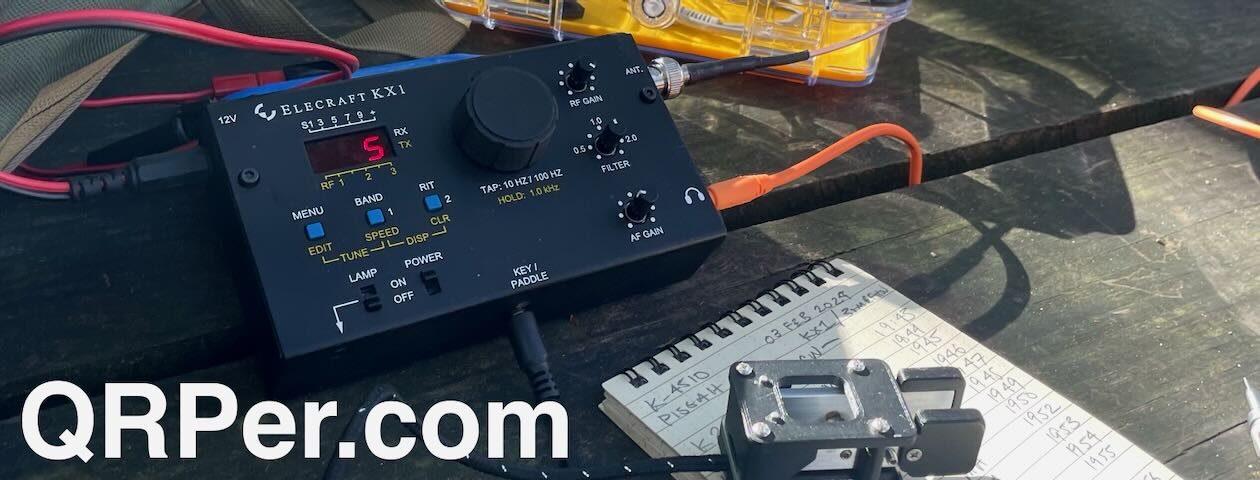Many thanks to Joshua (KO4AWH) who shares the following guest post:

Ten-Tec Argonaut 509 Acquisition
by Joshua (KO4AWH)
My club president sent me a text on Sunday before our Monday club meeting. He wanted to know if I was interested in a Vintage 80s QRP Radio. He knows I have an affinity for QRP. Honestly, I think he is still amazed at how I managed to get through piles ups on his hexbeam during summer field day with my TX-500. Boy was that fun.
The deal was a Ten-Tec 509 with the microphone and CW filter, the matching 251 power supply with meter, and the 504 matching 50W amplifier. He sent me a photo, I had to look it up. I have heard of Ten-Tec, thanks to Thomas K4SWL, but certainly was not familiar with their Argonaut 509. I was intrigued. I don’t have a single vintage piece of equipment. I have only been a Ham for less than 3 years.
We had some equipment from a club member SK donated for auction to raise funds for some club repeater upgrades. This was a good excuse to purchase an old piece of equipment that I likely would not have purchased otherwise. After looking over the 509 and accessories, all of which were in great condition, I brought them home. Of course I couldn’t help but hook everything up and turn on power. Everything powered up but no movement of the frequency indicator, not a great sign, and no audible hint of changing reception frequency. After further inspection it seemed the dial tuning mechanism was seized up. Looks like another project.

The next morning, as I had a few minutes to spare I started taking things apart. I have never pulled apart an old transmitter before so I took my time as I studied all the components and marveled at the simplistic yet complex circuitry found under the covers. Once I was down to the tuning mechanism, a few desoldered wires later, it was removed and ready for cleaning. I don’t know if the grease was original, but it sure was hard. After carefully cleaning, greasing, and reassembling all the components, soldering a couple wires back, and reassembling the housing, I was ready to power it back up. I don’t want to understate the work involved, it can be quite tricky, but I really enjoy this type of thing.

After tuning around a bit and working with the controls on the Radio, I found a POTA operator to zero beat. I needed something to reference in order to adjust my knob indicator so I would know what frequency the radio is on. I actually received the manual for the radio and each of the components. Reading through a few key points the night before really helped out when I was ready to start tuning in and transmitting.

I had the amplifier on, I set the DRIVE to about half way guessing that was okay and called back to the Activator. First call, he called me back with a 59! WOW, I was excited. I let him know I was on an old Ten-Tec that I had just repaired and he came back and said the audio and signal were great. How exciting! So, naturally, I hunted a few more stations and then listened to a few rag chews as I got familiar with the Radio.
Not only was I excited to have repaired my first radio, I am also amazed at the capability of this Radio originally released in 1973. I am not a long time SWL or radio operator but there is certainly something very appealing to me about the audio this Rig produces. I wasn’t certain what I was getting into with this rig, but I sure am happy how it worked out! I may just be on the hunt for another Ten-Tec. I even plan to take this to my local park and do at least one activation with it.
Here is a quick excerpt from the introduction in the operating manual.
“The Argonaut opens a whole new world of excitement and fun in Amateur Radio. We think you will find QRP a welcome change. Five watts are only 2-1/2 S-units below 150 watts for the same conditions. When skip is favorable and QRM light, you will not be conscious of using low power.”
73
Joshua
KO4AWH
 Some activations are more challenging than others.
Some activations are more challenging than others.


















































